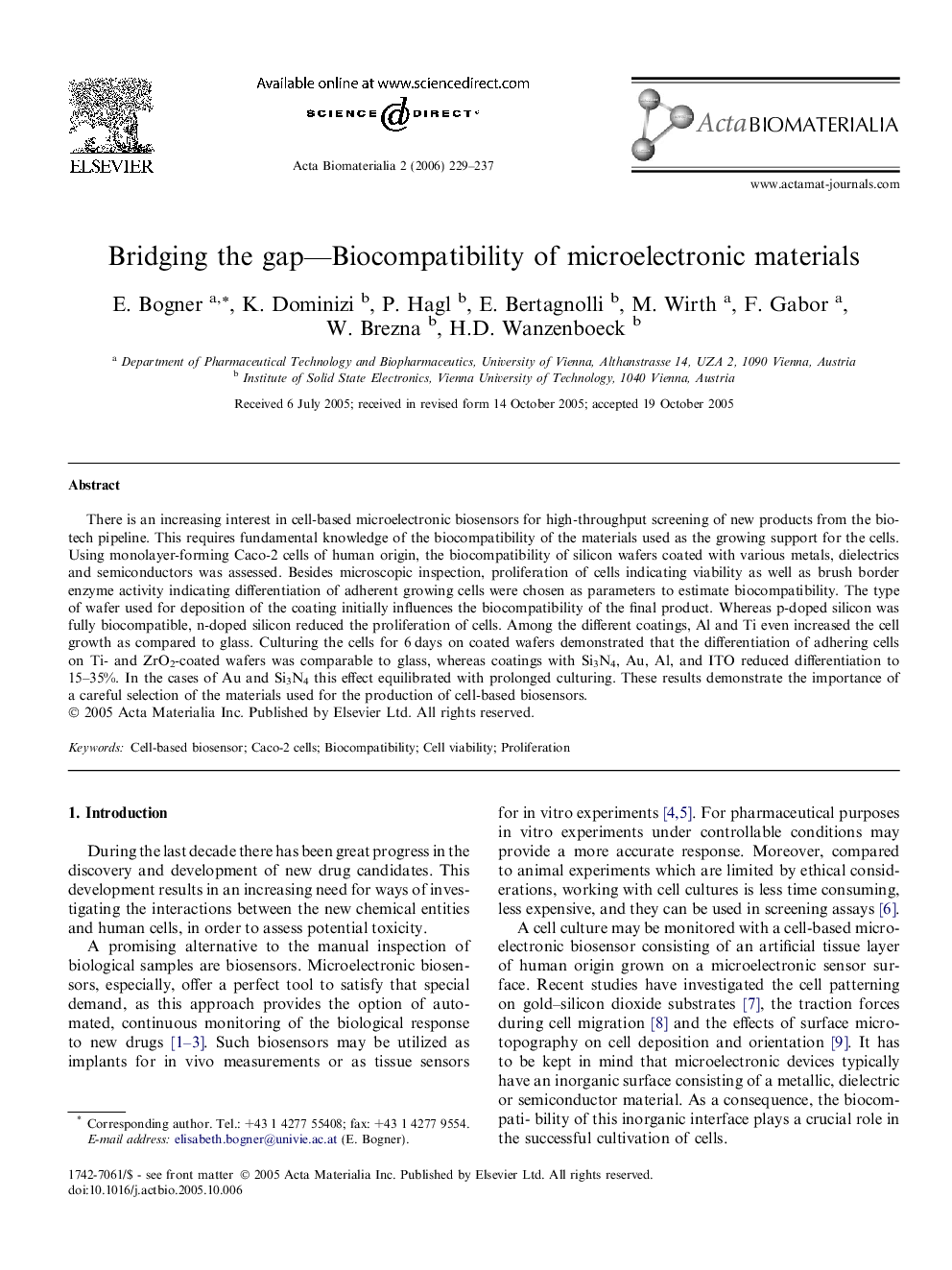| کد مقاله | کد نشریه | سال انتشار | مقاله انگلیسی | نسخه تمام متن |
|---|---|---|---|---|
| 2590 | 117 | 2006 | 9 صفحه PDF | دانلود رایگان |

There is an increasing interest in cell-based microelectronic biosensors for high-throughput screening of new products from the biotech pipeline. This requires fundamental knowledge of the biocompatibility of the materials used as the growing support for the cells. Using monolayer-forming Caco-2 cells of human origin, the biocompatibility of silicon wafers coated with various metals, dielectrics and semiconductors was assessed. Besides microscopic inspection, proliferation of cells indicating viability as well as brush border enzyme activity indicating differentiation of adherent growing cells were chosen as parameters to estimate biocompatibility. The type of wafer used for deposition of the coating initially influences the biocompatibility of the final product. Whereas p-doped silicon was fully biocompatible, n-doped silicon reduced the proliferation of cells. Among the different coatings, Al and Ti even increased the cell growth as compared to glass. Culturing the cells for 6 days on coated wafers demonstrated that the differentiation of adhering cells on Ti- and ZrO2-coated wafers was comparable to glass, whereas coatings with Si3N4, Au, Al, and ITO reduced differentiation to 15–35%. In the cases of Au and Si3N4 this effect equilibrated with prolonged culturing. These results demonstrate the importance of a careful selection of the materials used for the production of cell-based biosensors.
Journal: Acta Biomaterialia - Volume 2, Issue 2, March 2006, Pages 229–237